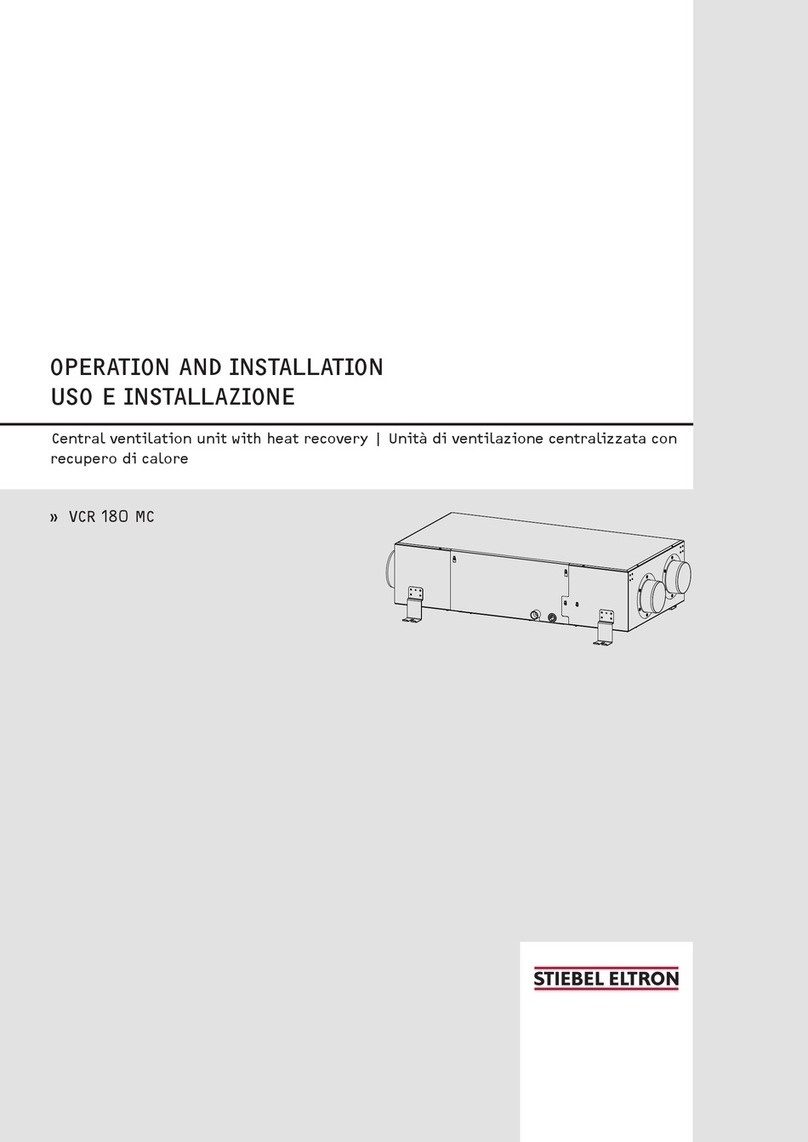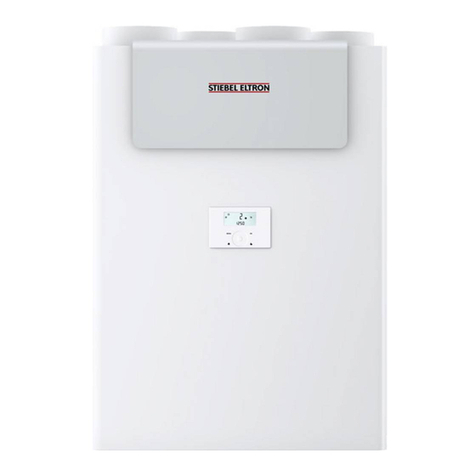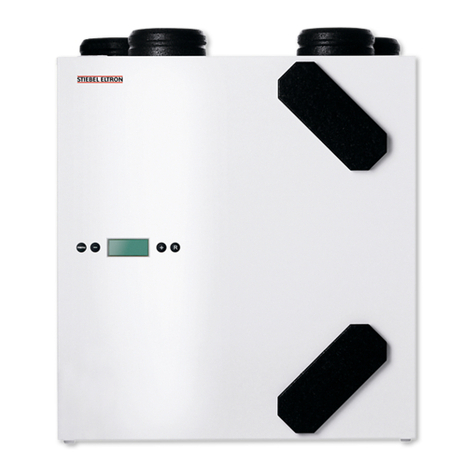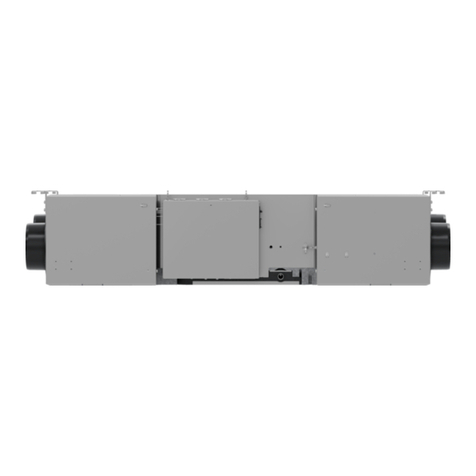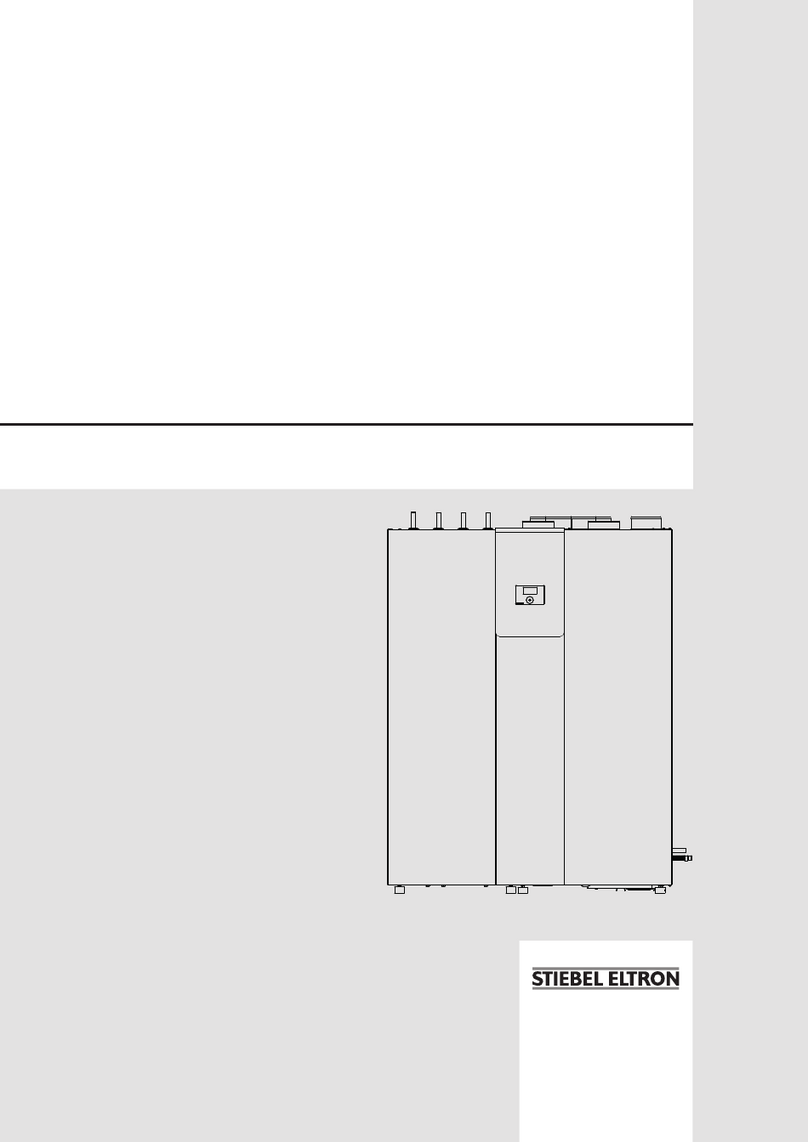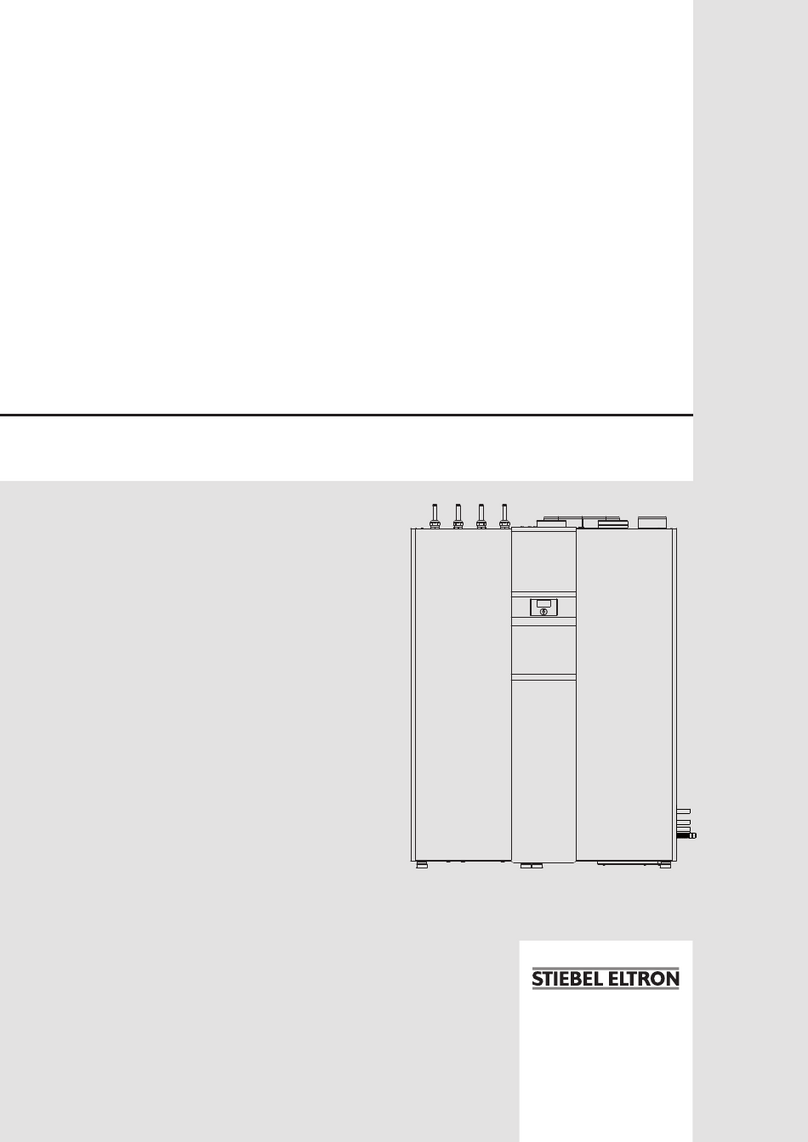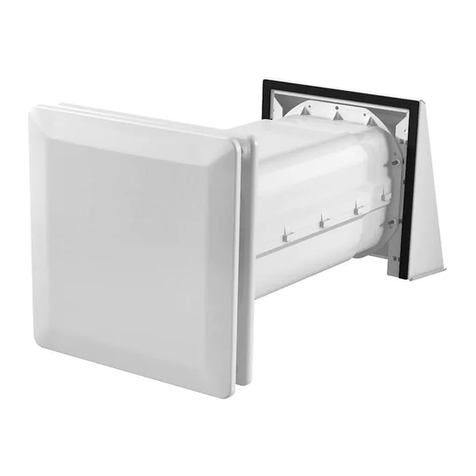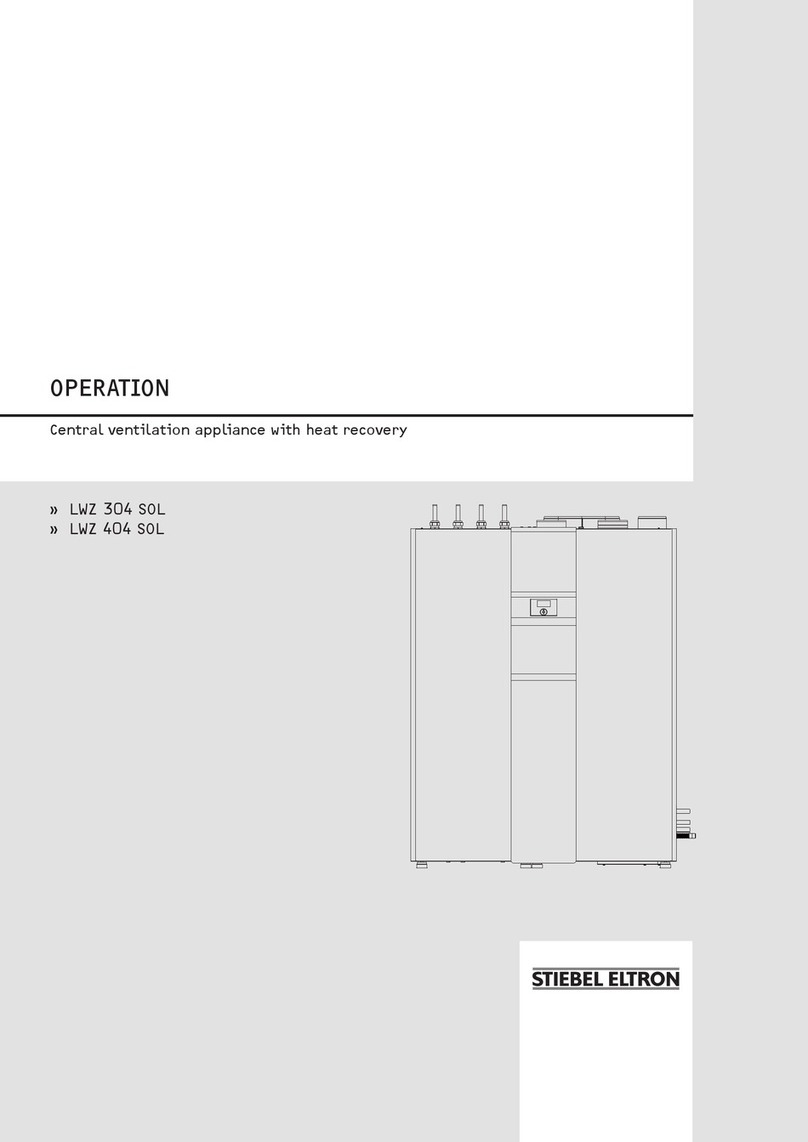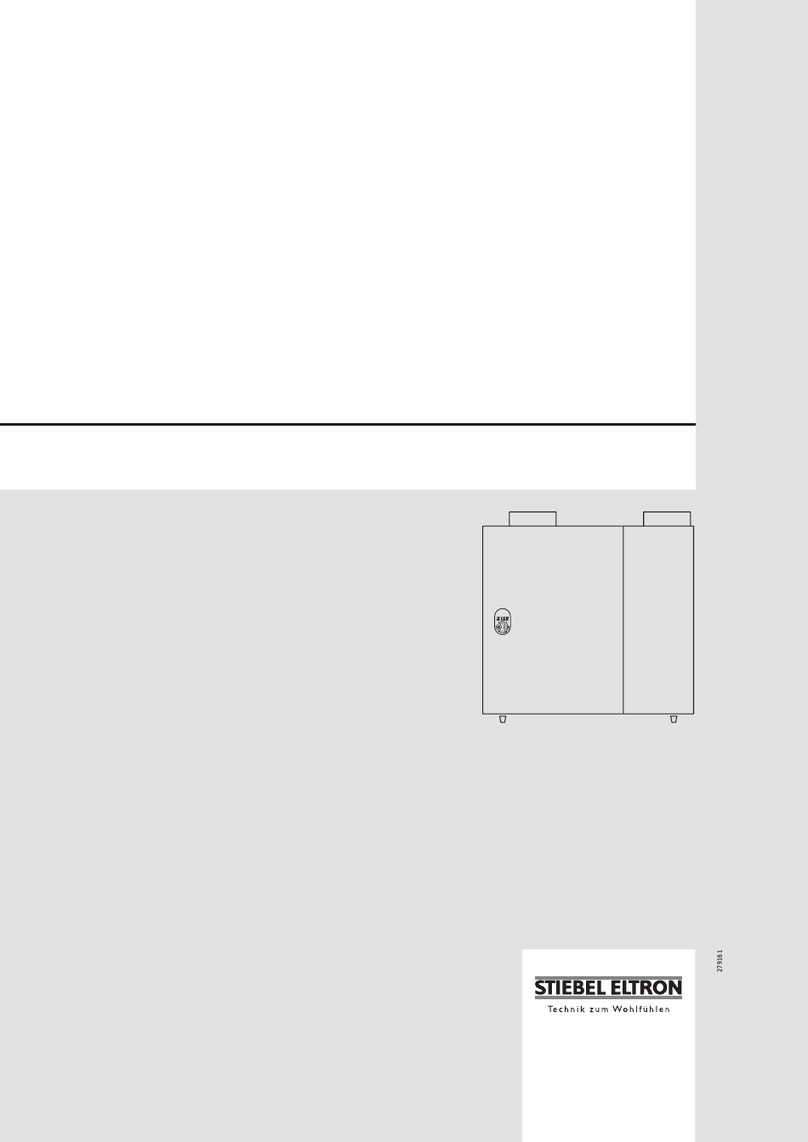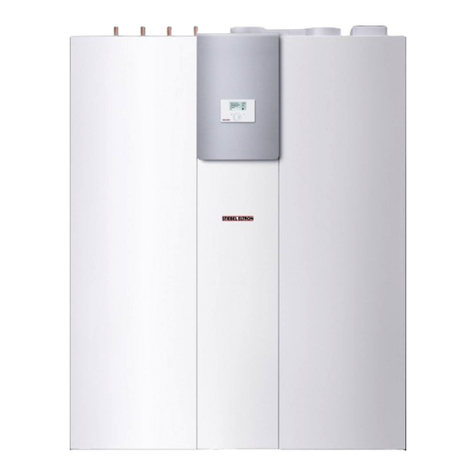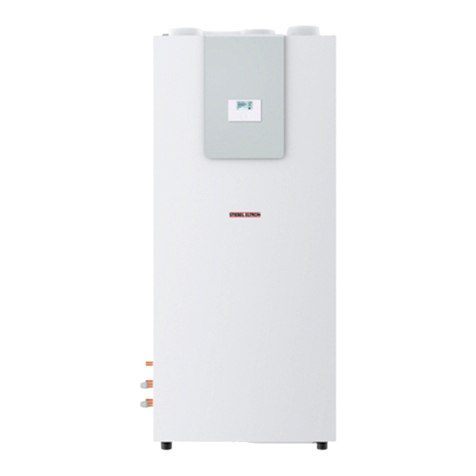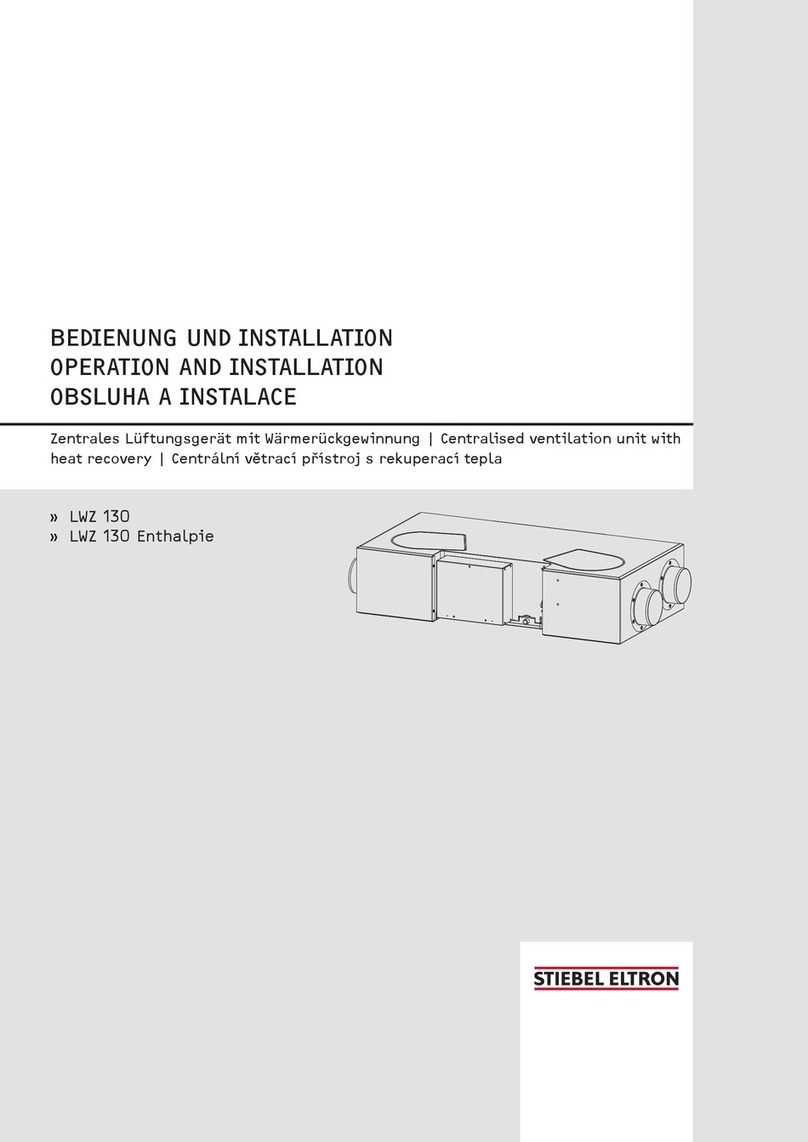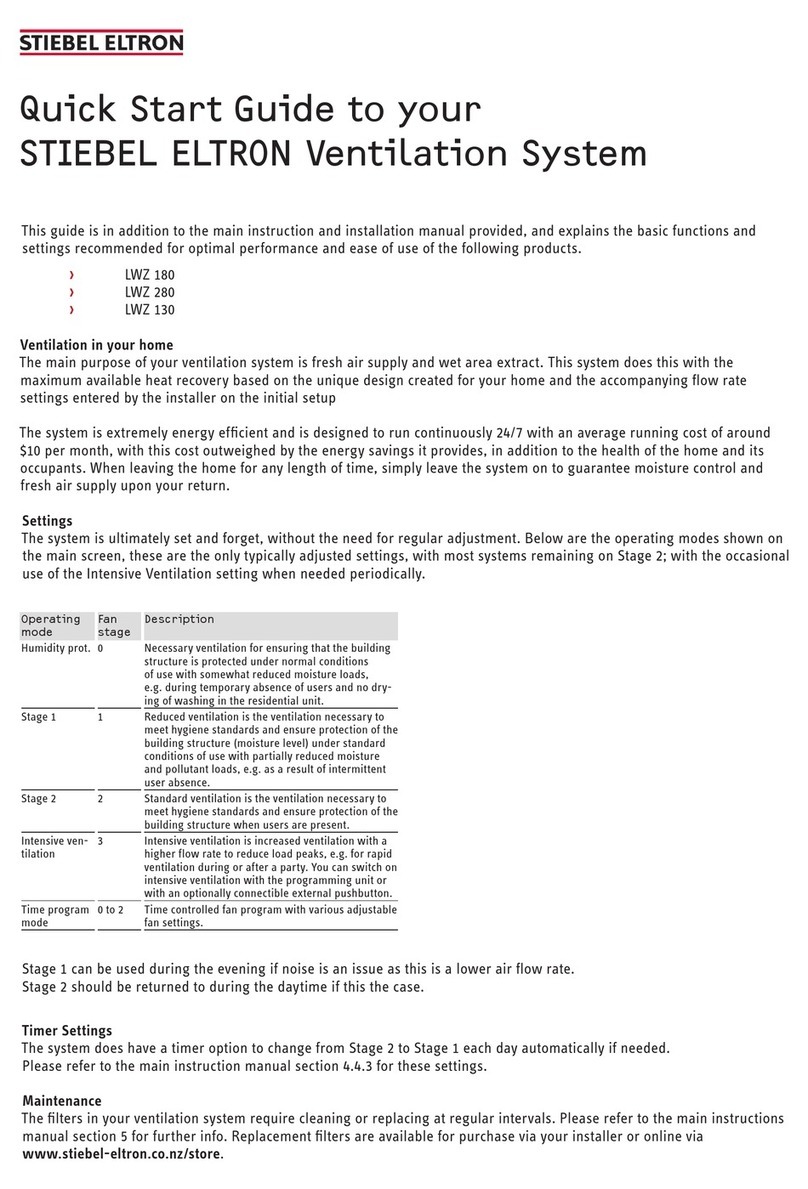
OPERATION
Safety
4| LWZ 130 J www.stiebel-eltron.com
2. Safety
2.1 Intended use
The appliance is designed as a mechanical ventilation unit with
central supply air and extract air routing.
The appliance is intended for domestic use. It can be used safely
by untrained persons. The appliance can also be used in a non-do-
mestic environment, e.g. in a small business, as long as it is used
in the same way.
Any other use beyond that described shall be deemed inappro-
priate. Observation of these instructions and of the instructions
for any accessories used is also part of the correct use of this
appliance.
It is deemed inappropriate to:
- Use extract air containing grease, explosive gases, dust or
adhesive aerosols
- Connect cooker hoods or vented tumble dryers to the ventila-
tion system
Never adjust the settings of supply and extract air vents inside the
rooms. These have been set up by a qualified contractor during
commissioning.
2.2 General safety instructions
!
WARNING Injury
The appliance may be used by children over 8 years of
age and persons with reduced physical, sensory or men-
tal capabilities or a lack of experience and expertise,
provided that they are supervised or they have been
instructed on how to use the appliance safely and have
understood the potential risks. Children must never play
with the appliance. Children must never clean the ap-
pliance or perform user maintenance unless they are
supervised.
WARNING Injury
The discharged cold air can cause condensation to be
formed in the vicinity of the air discharge.
Ensure that no risk of slipping due to wet conditions
or ice formation occurs on adjacent footpaths and
driveways at low temperatures.
2.3 Test symbols
See type plate on the appliance.
3. Appliance description
The appliance draws in outdoor air with a fan. A second fan ex-
tracts stale air from the rooms containing odours or moisture,
e.g. kitchen, bathroom, WC. Extract air and outdoor air are routed
through separate air ducts. Extract air and outdoor air are filtered
by separate filters.
The extract air and outdoor air flow through a cross-countercur-
rent heat exchanger. The outdoor air absorbs heat taken from the
extract air. This enables a large proportion of thermal energy to
be recovered.
The air flow rate is preset for each fan stage by the qualified con-
tractor during commissioning. Constant flow rate control ensures
that the air flow rates through the supply air and extract air fans
are achieved irrespective of the duct pressure.
Stage Display
Ventilation
for humidity
protection
0
"Power"
symbol and
digit0
Necessary ventilation for ensuring that
the building structure is protected under
normal conditions of use with somewhat
reduced moisture loads, e.g. during tem-
porary absence of users and no drying of
washing in the residential unit.
Reduced
ventilation
1
"Fan" sym-
bol and
digit1
Reduced ventilation is the ventilation
necessary to meet hygiene standards and
ensure protection of the building structure
(moisture level) under standard conditions
of use with partially reduced moisture and
pollutant loads, e.g. as a result of intermit-
tent user absence.
Standard
ventilation
2
"Fan" sym-
bol and
digit2
Standard ventilation is the ventilation
necessary to meet hygiene standards and
ensure protection of the building structure
when users are present.
Intensive
ventilation
3
"Fan" sym-
bol and
digit3
Intensive ventilation is increased ventila-
tion with a higher flow rate to reduce load
peaks, e.g. for rapid ventilation during or
after a party. You can switch on intensive
ventilation with the "intensive ventilation"
button or with an optionally connectible
external switch.
3.1 Frost protection
The appliance has a frost protection controller, which ensures that
it works to optimum effect even at low outside temperatures. If the
outdoor air temperature falls below the selected frost protection
value, the electric preheating coil is switched on. This prevents the
cross-countercurrent heat exchanger from freezing up. When the
preheating coil is active, the "frost protection" symbol illuminates
on the display.
3.2 LWZ 130 JE: Enthalpy heat exchanger
The enthalpy heat exchanger is a highly efficient, moisture-trans-
ferring countercurrent heat exchanger with a selective membrane.
The membrane helps to recover moisture from the extract air and
transfer it to the supply air. This prevents the relative humidity
in the rooms from dropping too low during the winter months.
